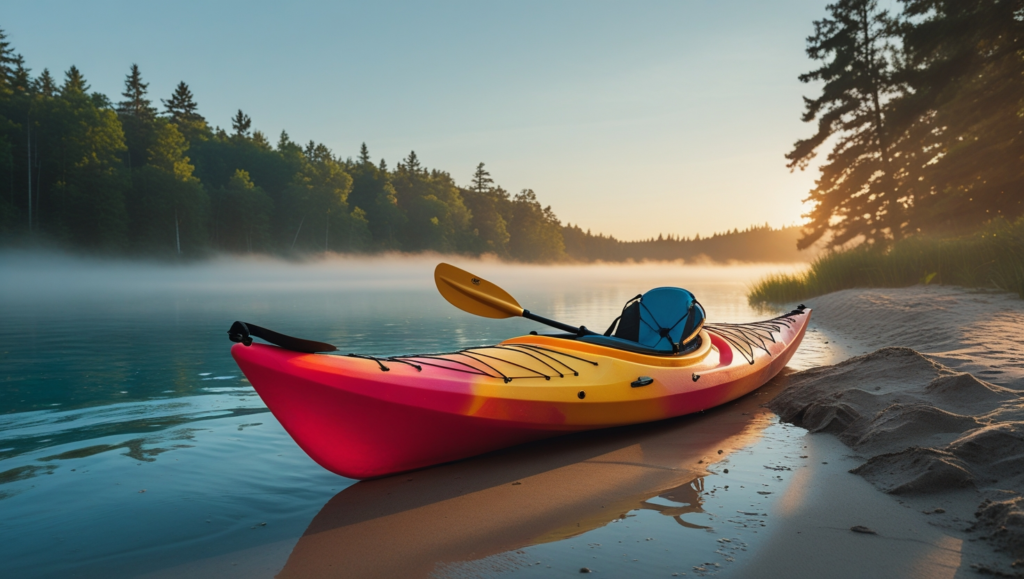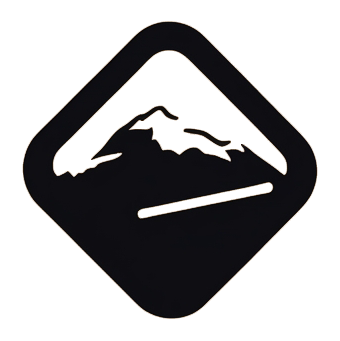
If you’re just beginning your kayaking journey or looking to switch up your gear, you’ve likely come across the term “sit on top kayak.” You might be wondering whether this style suits your needs or if it’s better to stick with something more traditional. Choosing the right kayak can make or break your experience on the water. That’s why understanding what a sit on top kayak is, including the good, the bad, and the essential tips, is the first step to making a decision you won’t regret.
What Is a Sit on Top Kayak?
You’ve probably seen them at the beach or on a calm lake—wide, open-deck kayaks that look more like molded plastic platforms than sleek watercrafts. A sit on top kayak is exactly what it sounds like: instead of sitting inside the kayak like a traditional sit-in model, you sit on top of the deck. There’s no enclosed cockpit, and you’re fully exposed to the elements. This makes them a go-to choice for beginners and casual paddlers who want something stable and easy to use.
These kayaks are often made of durable polyethylene and designed with drainage holes called scupper holes that let water escape. That means you don’t need to worry about bailing water manually. Most models also include storage wells, paddle holders, and adjustable seats for added comfort.
The Pros of a Sit on Top Kayak
When you’re considering buying a kayak, weighing the benefits can help you understand if this type is right for you. Here are the standout advantages:
- Ease of Use: Sit on top kayaks are straightforward. You don’t need advanced skills to get in or out. This is perfect if you’re not as flexible or have concerns about getting stuck inside a kayak.
- Great for Beginners: Because of their stability and ease, these kayaks are often recommended for people just starting out. You’re less likely to capsize, and if you do, it’s easy to re-enter from the water.
- Freedom of Movement: Without an enclosed cockpit, your legs are free. This is particularly useful if you want to fish, swim, or simply stretch.
- Self-Bailing: The scupper holes allow water to drain naturally, which means you don’t have to be constantly vigilant about splashes or rain collecting inside.
- Excellent for Warm Weather: Being fully exposed means you’ll stay cool. Splashing water isn’t a problem—it’s part of the fun.
- Better for Certain Activities: Fishing, diving, and recreational paddling are all made easier with the open layout.
The Cons of a Sit on Top Kayak
Of course, no kayak is perfect. There are some trade-offs you should be aware of:
- Exposure to the Elements: You’ll get wet. Wind, sun, and waves will hit you directly, which might not be ideal in cooler conditions.
- Slower Speed: These kayaks are generally wider and slower than sit-in models. If you’re into speed or long-distance paddling, this may be a deal-breaker.
- More Affected by Wind: With a higher center of gravity and open design, sit on tops can be harder to handle in strong winds.
- Less Efficient in Rough Water: While stable on flat water, these kayaks might not perform as well in choppy or fast-moving water.
- Heavier and Bulkier: Some sit on tops can be heavier and harder to transport, especially models with fishing gear attachments.
Key Features to Look For in a Sit on Top Kayak
Choosing the right model involves more than just picking the most colorful one. Focus on features that align with how you plan to use your kayak:
- Length and Width: A longer kayak will track better and be faster, while a wider one will feel more stable. Beginners often prefer wider models.
- Weight Capacity: Check how much gear and body weight your kayak can handle. This is especially important if you’re bringing along fishing equipment or planning multi-hour excursions.
- Seat Comfort: Some kayaks come with deluxe, adjustable seats. Don’t underestimate how important this is for longer paddling sessions.
- Storage Options: Look for front and rear storage wells, dry hatches, and tie-downs. The more organized your gear, the smoother your trip.
- Material and Durability: Rotomolded polyethylene is common and known for being impact-resistant. Composite models exist too, but they’re pricier.
- Portability: Consider the weight and size. Can you lift it onto your car? Do you need a cart?
- Tracking and Stability: Features like a skeg or rudder can help with directional control. Hull shape also affects stability.
Best Uses and Ideal Conditions
You should also think about how and where you’ll be kayaking. Sit on tops shine in certain conditions:
- Recreational Paddling: Lakes, calm rivers, and coastal bays are perfect. The stable platform is ideal for soaking in nature.
- Fishing: These kayaks often come with rod holders and mounts for accessories.
- Warm Weather Conditions: Since you’ll get wet, choose sunny days and warmer temperatures.
- Short Trips or Day Adventures: While great for a few hours, they might not be as comfortable for overnight journeys unless well-equipped.
Sit on Top Kayak vs Sit-In Kayak
To better understand whether a sit on top kayak is for you, compare it with the traditional sit-in style. Here’s a quick table to help:
| Feature | Sit on Top Kayak | Sit-In Kayak |
|---|---|---|
| Accessibility | Easy to get in/out | Requires more skill |
| Comfort | Open and spacious | Enclosed and warmer |
| Weather Exposure | Fully exposed | Protected from wind |
| Re-entry from Water | Simple | Difficult |
| Storage Space | More on-deck options | Often internal storage |
| Ideal Use | Fishing, leisure | Touring, rough water |
Beginner Mistakes to Avoid
If you’re new to kayaking, it’s easy to make choices that lead to regret. Avoid these common pitfalls:
- Ignoring Weight Capacity: Overloading your kayak affects performance and safety.
- Choosing the Wrong Size: Bigger isn’t always better. Find a balance between length, width, and your intended use.
- Not Testing Before Buying: Try different models if you can. Comfort and handling matter.
- Skipping Safety Gear: A good PFD (life vest), whistle, and waterproof bag are must-haves.
- Neglecting Transport Logistics: Make sure you have a way to move and store the kayak.
Maintenance Tips for Longevity
Your sit on top kayak will last for years if you take care of it. Follow these maintenance tips:
- Rinse After Use: Saltwater and dirt can damage the material. Rinse with fresh water.
- Store Properly: Avoid prolonged exposure to sunlight. Use a shaded area or kayak cover.
- Inspect Regularly: Check for cracks, loose parts, or damage after every trip.
- Tighten Screws and Mounts: Accessories can loosen over time.
- Use a Kayak Cart: This prevents scraping the bottom when moving it.
Must-Have Accessories
Enhance your kayaking adventures with the right accessories:
- Paddle Leash: Prevent losing your paddle in the water.
- Dry Bags: Keep valuables and snacks safe.
- Anchor System: Useful if you’re fishing or relaxing.
- Rod Holders: A must for anglers.
- Cooler or Crate: For drinks, bait, or catch storage.
FAQ: Sit on Top Kayak
Is a sit on top kayak good for beginners?
Yes, they are ideal due to their stability, ease of use, and simple re-entry from water.
Can I use a sit on top kayak in the ocean?
Absolutely. Just ensure it’s designed for saltwater and has proper tracking and safety features.
Will I get wet in a sit on top kayak?
Yes. Expect to get splashed, which is why they’re best for warm conditions.
Are sit on top kayaks slower than sit-in ones?
Generally, yes. They prioritize stability and ease over speed.
How do I choose the right size?
Consider your height, weight, and gear. Test different models when possible.
Conclusion: Is a Sit on Top Kayak Right for You?
Only you can decide what’s best for your needs, but if you’re someone who values comfort, stability, and easy access to the water, then a sit on top kayak could be your perfect match. They’re especially great for beginners and those who want a versatile craft for fishing, recreational paddling, or sunny adventures. While they may not offer the same speed or shelter as sit-in models, the trade-offs are often well worth it for the freedom and simplicity they bring. So weigh your priorities, use this guide as your checklist, and make your kayaking experience one you’ll love from the first paddle stroke. Don’t forget to share this with fellow paddlers and comment below with your questions or kayak tales—your insight helps the whole community grow!


1 thought on “Sit on Top Kayak Explained: Pros, Cons, and Unforgettable Must-Know Tips”